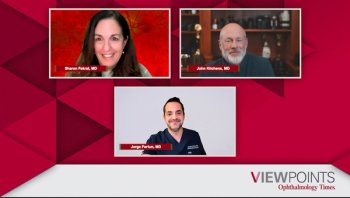
Defining Retinal Vascular Diseases AMD, DME, RVO
Panelists discuss how differing disease mechanisms, inflammatory drivers, and clinical priorities across AMD, DME, and RVO shape individualized therapeutic goals and the use of newer anti-VEGF agents.
Episodes in this series
The discussion opens with an overview of the evolving anti-VEGF treatment landscape for retinal vascular diseases, highlighting key distinctions among neovascular age-related macular degeneration (AMD), diabetic macular edema (DME), and retinal vein occlusion (RVO). The panel examines how disease mechanisms, chronicity, and inflammatory drivers shape therapeutic goals and treatment intensity. In AMD, VEGF remains the primary pathogenic target, with rapid intervention critical to prevent subretinal hemorrhage and irreversible vision loss. In contrast, DME and RVO demonstrate greater inflammatory and ischemic components, prompting consideration of multifactorial management strategies that may include both anti-VEGF and corticosteroid therapies. The experts also explore the structural and mechanistic nuances of next-generation agents such as aflibercept 8 mg and faricimab, emphasizing their molar potency, dual-pathway inhibition, and potential impact on fluid control and durability. Collectively, the conversation underscores individualized treatment strategies tailored to disease biology and patient response.
Newsletter
Don’t miss out—get Ophthalmology Times updates on the latest clinical advancements and expert interviews, straight to your inbox.














































.png)


